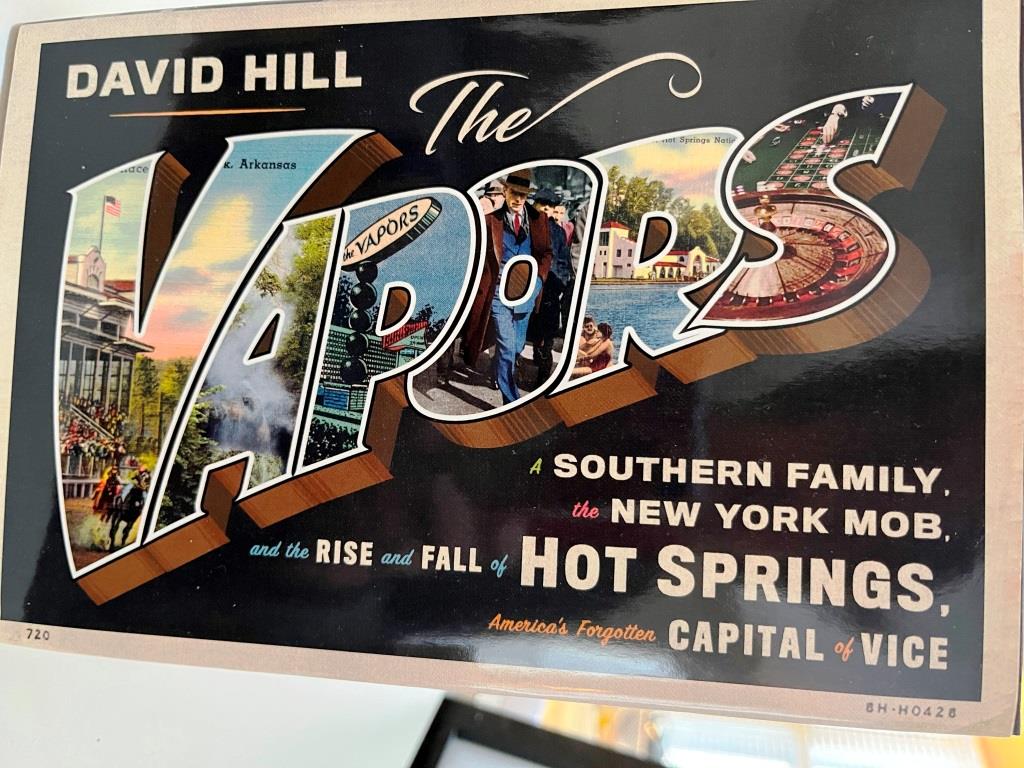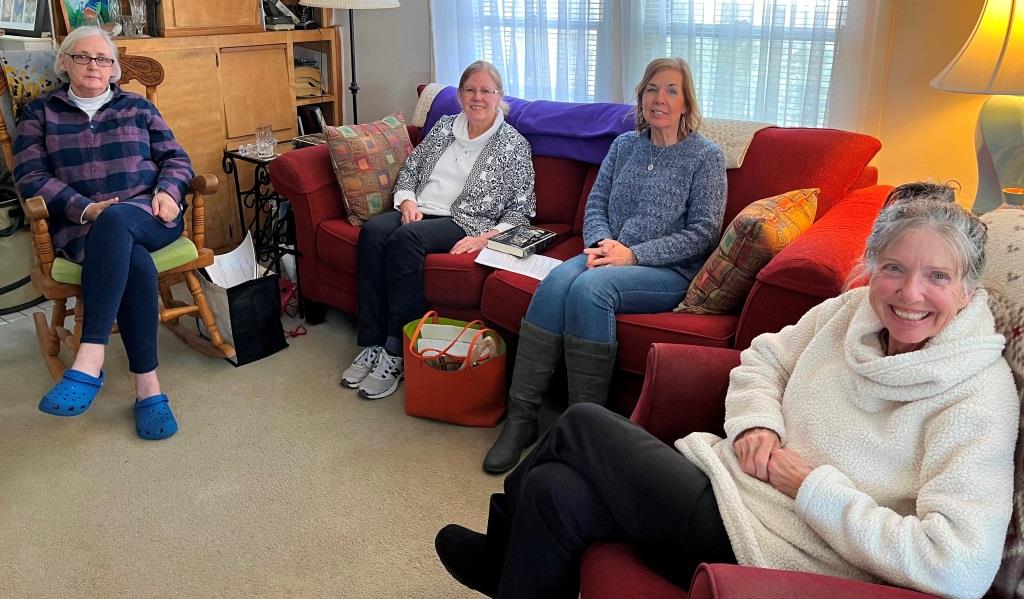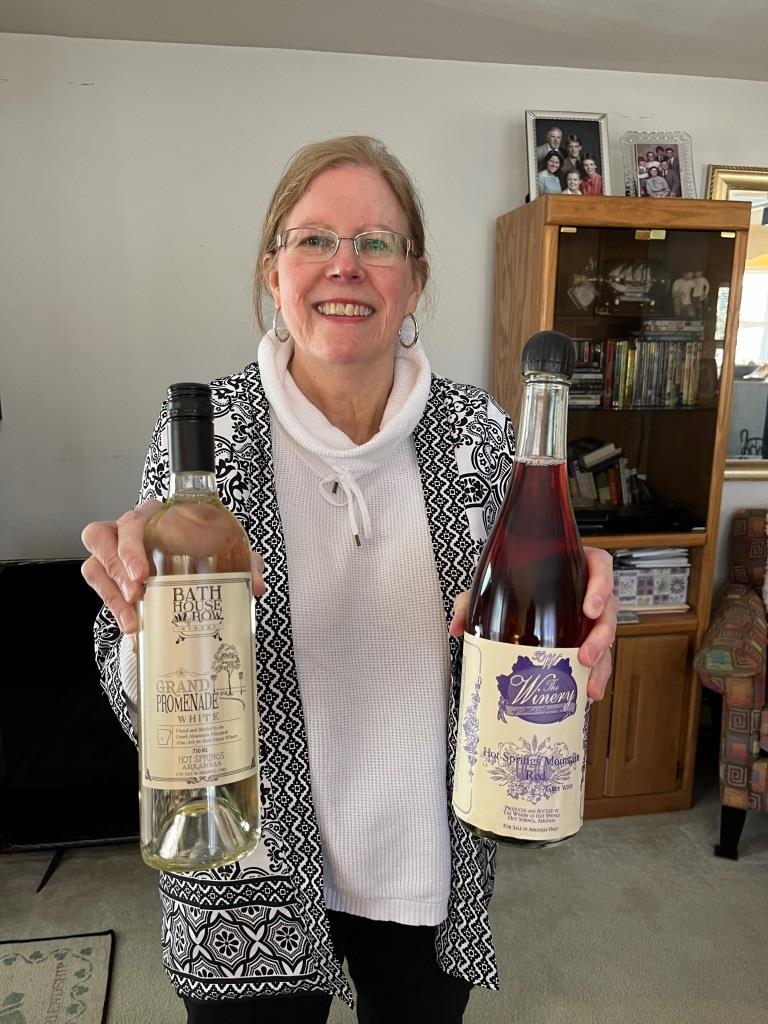The Vapors by David Hill was our book club read for February. The book is a history of Hot Springs in its heyday from 1931 through 1968. Thoroughly and deeply researched, the book was touted as a 2020 New York Times notable book and one of the Chicago Tribune's best nonfiction books of 2020. The story is told from three different voices—Owney Madden, a NY gangster who had at one point owned the Cotton Club in Harlem and was heavily involved in bootlegging but relocated to Hot Springs, Dane Harris, a local boy who tried to go to college to go in a different direction, but had to go back to HS to run the Black Cat liquor store for his family when his dad departed; (he goes on to being a kingpin in the HS gambling arena,)and then Hazel, the grandmother of the author and a person living on the edge. Some say the author's grandmother represents what life was like for the everyday inhabitants of Hot Springs, but I am not so sure she was a typical resident. I could have probably done without the Hazel story, or as least as much of it as there was. She was fairly inconsequential to the history of Hot Springs, but biographical for the author. I was surprised she resorted to alcohol and drugs after her experience with her husband.
When I started the book, I thought it was going to be the history of the nightclub- The Vapors, which I went to in the 1980’s as a seedy disco. The Vapor’s club opened in 1960 as the pinnacle of clubs in the country. While it is featured in the book, the storyline is really the tale of Hot Springs and its history of gambling. I had never heard Hot Springs described as “the vapors” before.
Called “sin city of the Bible Belt”, Hot Springs operated gambling in the open, even though it was illegal in the state. Talk about corruption hiding in plain sight. It is hard to believe that Hot Springs once rivaled Las Vegas in gambling, booze, and prostitution.
Included in the book are a list of well-known names from that era who visited or were a part of the history of HS, including Meyer Lansky, Al Capone, Bugsy Malone, Babe Ruth, Mickey Rooney, Virginia and Bill Clinton, and even Jack Ruby.
Due to the therapeutic, thermal springs (the vapors) which offered relief to those in pain, Hot Springs was the first area in the country to be named a national park and managed by the federal government. It also became a haven for athletes (and other famous people) wanting the therapy of the healing waters. I did not know that it had been the baseball spring training grounds for several major and minor league teams, including the Pittsburgh Pirates, Boston Red Sox, Cincinnati Reds, St. Louis Browns (later the Perfectos and, after that, the Cardinals), Philadelphia Phillies, Brooklyn Dodgers, New York Highlanders (later the Yankees), and many others. Exhibition games and infield practices, took place every spring in Hot Springs.
I also did not know about the Veteran’s Hospital and its role in WWII. During World War II, the hospital was at its peak business, having become the army’s leading medical facility in the country for treating patients with arthritis and other injuries. Even after the close of the war, the hospital continued to grow, serving more than 100,000 veterans by 1945.
I thoroughly enjoyed the book and read it in a few days. Others in our group were bogged down, especially in the middle and struggled at times, but everyone enjoyed it.
Our highest rating was a 4 and the lowest a 3. Overall, it came in at 3.5. I would say it is definitely worth reading if you are familiar with Hot Springs. I don’t think I would have liked this book as much if I wasn’t from Arkansas and knew the places he was talking about.
Cindy served us a fine meal complete with Bath house wine.
We had a wonderful discussion.



